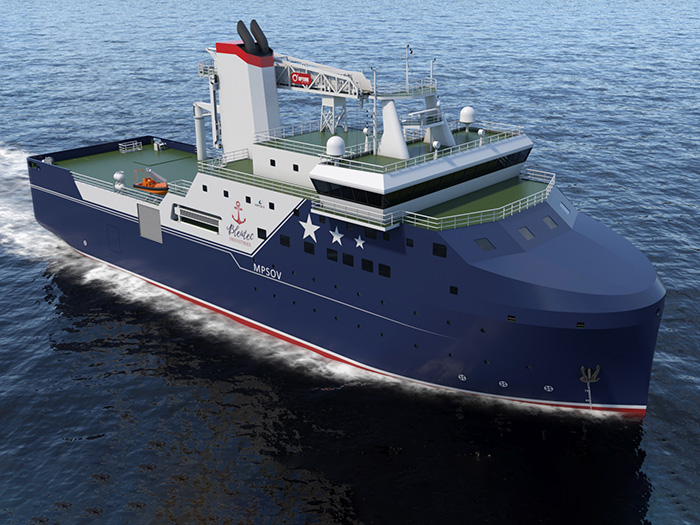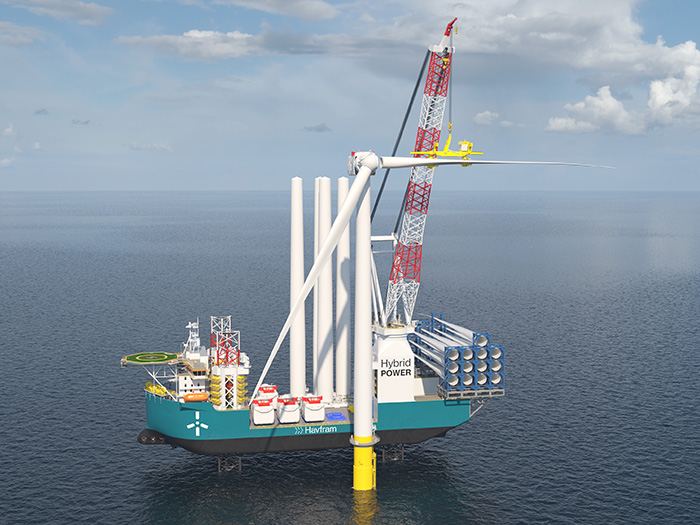When we last reported on Houston-headquartered Bleutec Industries Offshore Wind Services LLC back on March 2, it was to note that the company had received Approval in Principle (AiP) from ABS for the designs of its Jones Act compliant Binary Marine Installation Solution (BMIS) for offshore wind farm installation.
That solution consists of a spread of a spread of vessels designed to operate simultaneously or independently in offshore wind developments. It comprises a pile installation vessel (PIV), a wind turbine installation vessel light (WTIVL), and service operations vessels (SOVs), all specifically tailored for the U.S. Jones Act market.
Though Bleutec made no mention of it in announcing the AiP, MARAD’s most recent (February 23,2023) listing of pending Title XI financing applications shows Bleutec has filed an an application for Title XI guarantees for construction of four vessels: the piling vessel, the WTIV light and two SOVs. The MARAD listing doesn’t show how much is requested for each vessel, but lists the actual cost to the applicant for all four as $809,709,000. Bleutec is seeking Title XI loan guarantees on $708,500,000 of that,
The builder is listed as “to be determined.”
Under an initiative announced by the White House last June, vessels built for the offshore wind sector have been designated “Vessels of National Interest,” prioritizing them for Title XI financing.
As explained by MARAD, the program “provides for a full faith and credit guarantee by the United States Government to promote the growth and modernization of the U.S. merchant marine and U.S. shipyards. Through long-term debt repayment guarantees, the program encourages U.S. shipowners to obtain new vessels from U. S. shipyards cost effectively. It also assists U.S. shipyards with modernizing their facilities for building and repairing vessels. The repayment term allowed under the program generally is much longer, and the interest rates are lower, than those available from the commercial lending market because of the obligations guaranteed by the U.S. Government.”

















